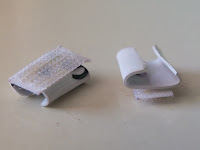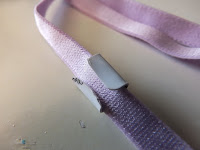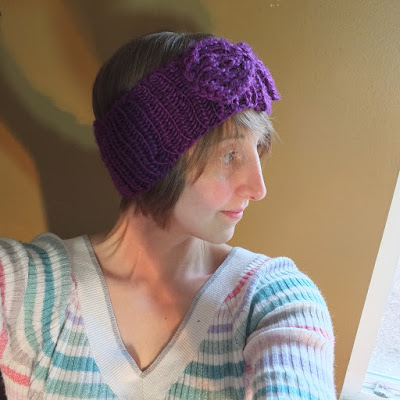And not like it, I certainly did.
On the model, it looked like a modest, relatively loose fitting, almost-knee-length dress in a sober green color that would be perfect for the office. When it came, I was disappointed to find that the inner layer was actually more of a neon yellow, and the fit was slightly small (as with all of my purchases from China) but still wearable.
My first move was to buy a 3-dollar bottle of navy blue dye, in the hopes that I could tone down the color a bit. I didn't expect much of the dye to take, considering the dress was clearly a synthetic material, but I hoped to at least mute the intensity of the shade a bit.
I used the boil-on-the-stove method to maximize the dye's effectiveness, and when I was done, I saw that I had succeeded in turning the liner from a fluorescent yellow to a pale mossy green. Not perfect, but better.
Unfortunately, all that time on the stove also shrank the fabric, causing it to fit ridiculously tightly. What had been designed as a knee-length dress was now a thigh-length dress with a gaping slit on one side. I sewed up the slit and finally felt the dress was ready for the office.
Sometimes you just need to wear an item for a day before you know it's never going to work for you. Such was the case with this dress. All day long, I was tugging on the bottom hem, trying to keep it from turning into a minidress. Even though I wore it with opaque tights and a modest cardigan, I still felt uncomfortably exposed. Added to that, its tendency to ride up caused it to bunch around my waist most unattractively. I had had more than enough of this dress by noon.
I decided I was going to chop it up and reform it into something I've been seeing a lot of lately: a below-the-knee pencil skirt—one that would end up having the exact same pattern as the lace pencil skirt pictured in my year in review post!
I tried it on using the neck hole as the new waistband, and found it wasn't bad. Unfortunately, the waist of the dress (its narrowest part) now sat on my hips (my widest part) and was stretched a little too tightly there.
My solution was to open up the side seam and add a bit of fabric at hip level. I got the fabric from the original top of the dress, which I cut off just below the armpit.
I expanded the side seam of the lining by adding a new piece of lining in a rough oval shape.
Then I did the same thing to the outer lace piece.
The patch was fairly obvious and looks a little odd hanging out there on my hip, so I spent some time after taking this photo trimming the excess fabric from the seam so it wouldn't look quite so black.
Once the dress had been expanded enough to fit over my hips, I only had to finish the waist. I did this in the roughest, quickest way imaginable (and didn't bother to take pictures either)—I folded the top over to the inside and sewed a one-inch seam with a zigzag stitch. I did not finish the edges.
Then, because the former bust was now at my waist and it was a tad too loose, I also took in the sides from the hip to the waist. This left a lot of bulk on the inside, which I'll probably trim off later
Originally, I thought, If I liked the skirt enough, I'd finish it with a proper waistband and a zipper (since it's hard to pull on over my hips), but common sense says this fabric is so cheap, it will be demolished before I get more than a few uses out of this skirt, so I think I'll just leave it as-is.
I tried on the skirt with every one of my black shirts, finally deciding on a black button-up velvet blouse with sequin trim, mainly because it was the only one short enough to look good with a knee-length skirt.
But once I had settled on velvet and sparkle, I had to go all the way and wear my velvety black boots with the sequin wedges—making me quite disco-fabulous for a day at the office. Sadly, these shoes are beginning to look blotchy and no longer as stunning as I remember them. Next project: figure out how to refresh velvet shoes!
 |
| Can you see the patch on the hip? I think it is less obvious now. |





















































